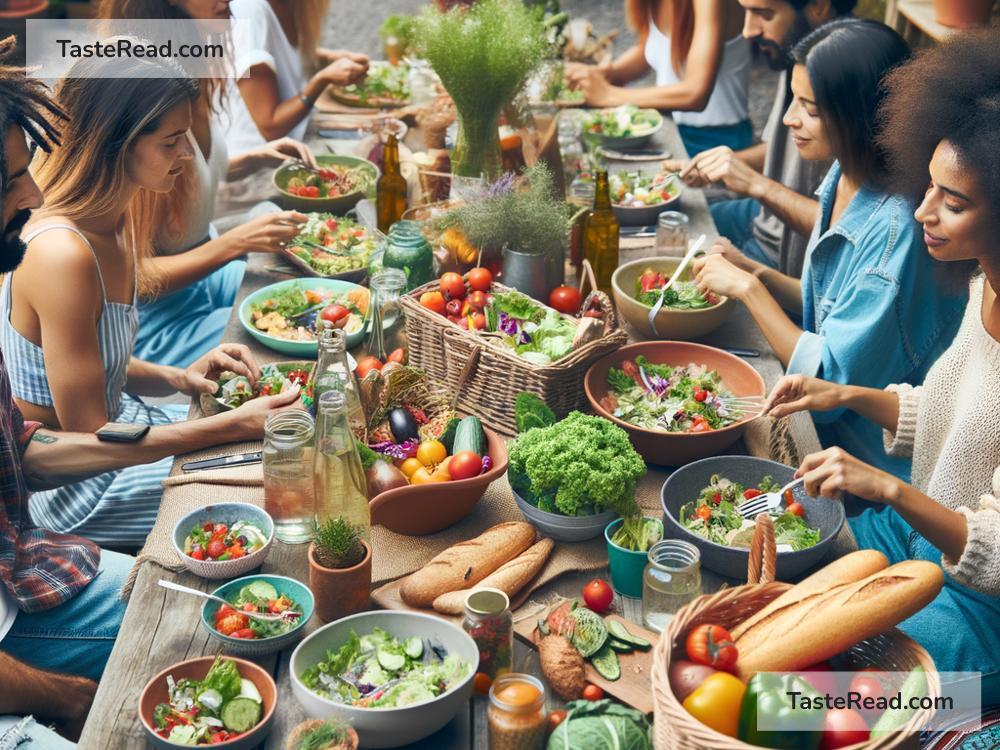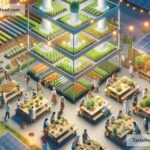The Future of Food and Building Resilient Communities
Food is one of the most important things in our lives. It brings people together, satisfies our hunger, and helps us stay healthy. But have you ever wondered how the way we grow, share, and eat food might change in the future? As the world faces big challenges, like climate change, economic disruptions, and growing populations, we need to think carefully about how food systems can adapt—and how communities can stay strong and connected.
In this blog, we’ll explore the future of food and how communities can build resilience to overcome tough times. Don’t worry—this isn’t a topic only for scientists or experts! Every person, no matter where they live, can play a role in shaping the future of food.
Challenges Facing Our Food Systems
Today, the way we grow and distribute food has problems. Farmers around the world struggle with extreme weather, like floods, droughts, and wildfires, caused by climate change. These events make it harder to grow crops and raise animals for food. On top of that, global supply chains—the systems used to move food from farms to supermarkets—can be disrupted by wars, pandemics, or economic instability. When this happens, food becomes expensive or difficult to access, especially for people in vulnerable communities.
Another challenge is how modern farming can harm the environment. For example, heavy use of chemical fertilizers and pesticides can damage soil and water supplies. Clearing forests to grow more crops can lead to deforestation, loss of wildlife, and increased carbon emissions, which worsen climate change. If we don’t improve these practices, we could reach a point where it’s not sustainable to grow enough food for everyone.
Future Solutions for Food Production
The good news? Many innovations are emerging to address these challenges. Scientists, farmers, and communities are working together to rethink how we produce food. Here are some exciting ideas for the future:
-
Vertical Farming: Imagine giant buildings filled with layers of crops growing indoors. Vertical farms use less land, water, and pesticides, and they can be built in cities where space is limited. Because they’re inside, crops are protected from bad weather, and they can grow year-round.
-
Lab-Grown Food: Researchers are creating ways to grow meat and dairy products in laboratories without using animals. This technology could reduce greenhouse gas emissions, save water, and protect animals from harm.
-
Regenerative Agriculture: Farmers are adopting practices that improve soil health, conserve water, and restore biodiversity. For example, planting cover crops and rotating crops prevent soil erosion and boost nutrients in the ground.
-
Alternative Proteins: Plant-based foods, like burgers made from beans or mushrooms, are becoming more popular. They use fewer resources to produce than traditional meat and are often healthier for people.
-
Local Food Systems: Instead of shipping food thousands of miles, communities are finding ways to grow and share food locally. This reduces the carbon footprint of transportation and builds stronger connections between farmers and consumers.
The Role of Community Resilience
Resilience means being able to bounce back when things go wrong. For communities, resilience is about coming together to solve problems and stay strong during crises. When it comes to food, resilient communities focus on growing and sharing food in ways that support their people and the planet.
One way to build resilience is by creating community gardens. These are spaces where neighbors can grow fruits, vegetables, and herbs together. Community gardens give people access to fresh produce, teach them gardening skills, and encourage teamwork. Even in crowded cities, rooftop gardens or small plots of land can make a big difference.
Another idea is fostering food cooperatives, where groups of people buy and sell food together. These co-ops prioritize fairness and affordability, making it easier for everyone to get healthy food. They also support local farmers and businesses, keeping money within the community.
Food banks are another important part of resilience. These organizations help people during tough times by offering free food to those in need. During events like hurricanes or pandemics, food banks play a critical role in ensuring no one goes hungry.
What Can You Do?
You might be wondering how this applies to you. Even if you’re not a farmer or food scientist, there are many small actions you can take to support the future of food and community resilience.
-
Grow Your Own Food: Start small by planting herbs, tomatoes, or potatoes in your home or backyard. Gardening connects you to nature and makes you less dependent on store-bought food.
-
Support Local Farmers: Visit farmers’ markets or buy food from local producers. This supports your local economy and reduces the environmental impact of food transportation.
-
Reduce Food Waste: Did you know that one-third of food produced globally goes to waste? Plan your meals, store leftovers, and compost when you can to cut down on waste.
-
Educate Yourself and Share Ideas: Learn about food systems and talk to your friends and family about why these changes matter. Create awareness in your community about the importance of sustainable and resilient food practices.
Looking Ahead
The future of food isn’t just about what we grow or eat—it’s about how we work together to build stronger, healthier, and more connected communities. By investing in sustainable solutions, supporting local farmers, and reducing waste, we can ensure that everyone has access to food while protecting our planet.
Resilience is a community effort, and every small action adds up. Whether you start a garden, volunteer at a food bank, or choose planet-friendly meals, you can be part of the movement to build a better food future—one that nourishes people and keeps communities thriving for generations to come.


